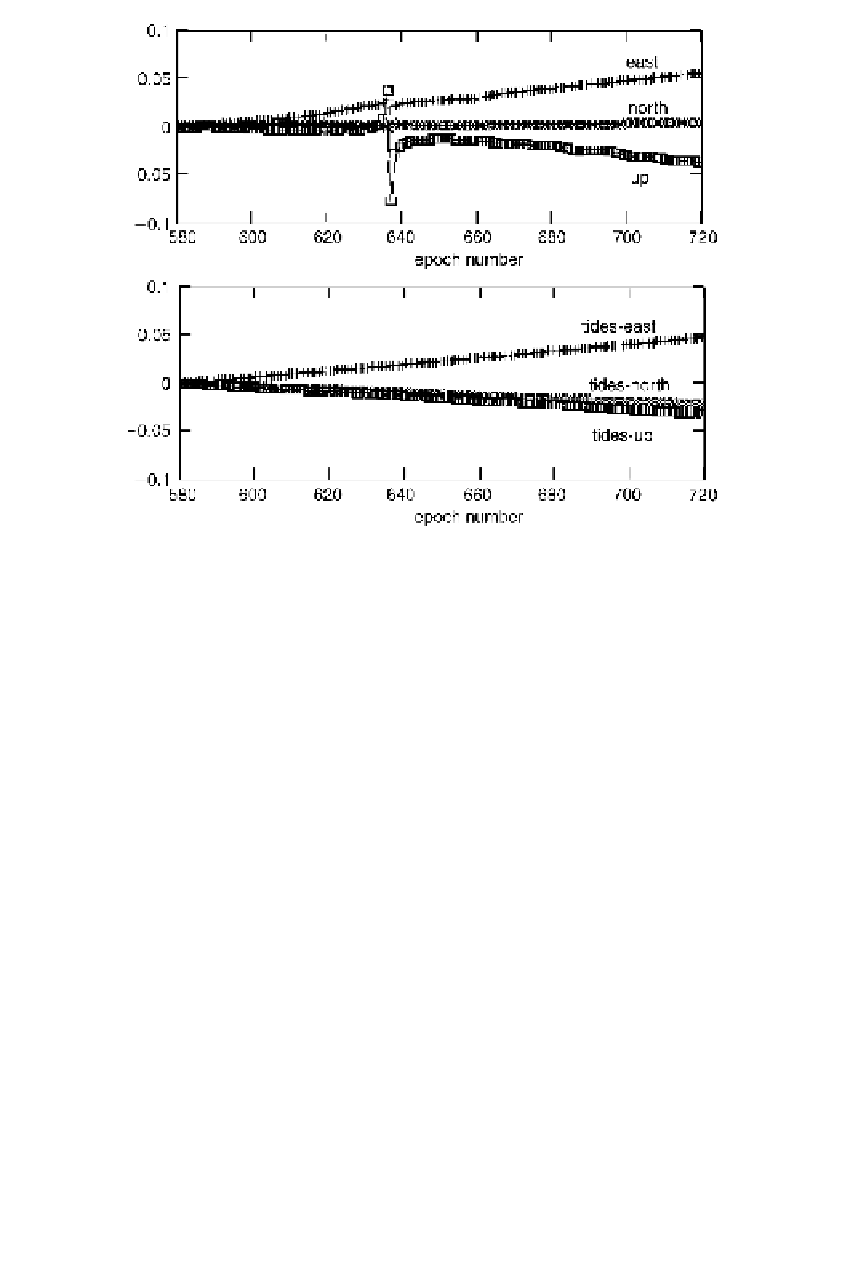Global Positioning System Reference
In-Depth Information
1
2
3
4
5
6
7
8
9
10
11
12
13
14
15
16
17
18
19
20
21
22
23
24
25
26
27
28
29
30
31
32
33
34
35
36
37
38
39
40
41
42
43
44
45
[25
Lin
—
1
——
Nor
PgE
Figure 7.13 Estimated and computed solid earth tide variations.
Station WES2, Mas-
sachusetts, DOY 2 (2000), epochs 17400-21600 seconds of day. (Witchayangkoon, 2000).
Units are in meters.
[25
sa
tellite clock are highly correlated. One must, therefore, use the same antenna offsets
th
at were used for generating the precise ephemeris (of which the satellite clock error
is
a part). The precise ephemeris must, of course, always refer to the same reference
fra
me for positions derived with PPP to maintain their consistency. All errors that are
ty
pically expected to cancel in double differencing must be applied in PPP. For ex-
am
ple, although the phase windup correction is little known to GPS users because its
ef
fect cancels in double differencing over short baselines, it directly affects PPP. The
ph
ase windup correction is especially important in kinematic applications where the
an
tenna can readily rotate in azimuth. The absolute location of the receiver antenna
ph
ase center must be accurately known, in order to reduce the measurements to the
he
ight of the monument. The magnitude of the solid earth tides far exceeds the PPP
ac
curacy and must therefore be incorporated. Even ocean loading is important for the
m
ost accurate applications of PPP.
7.6 REAL-TIME PRECISE POINT POSITIONING
Point positioning as described above refers to positioning of a single receiver us-
ing single- or dual-frequency pseudoranges and the broadcast ephemeris to compute































